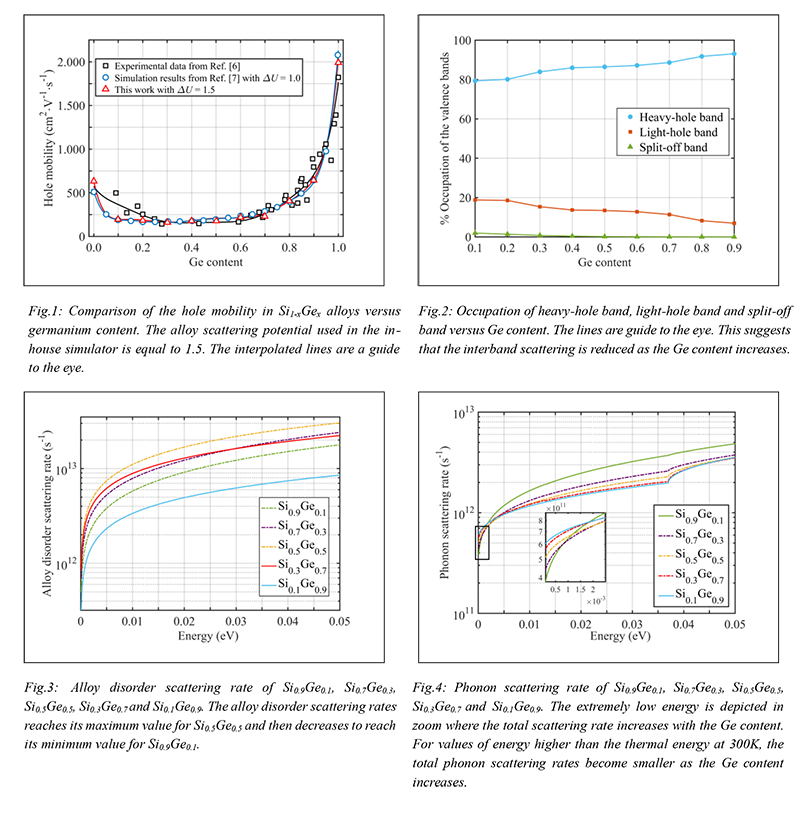IWCN 2021: Effective Monte Carlo Simulator of Hole Transport in SiGe alloys
Category
Published on
Abstract
It has been found that, with respect to the Negative Bias Temperature Instability (NBTI) effect, p-type silicon-germanium transistors have greater reliability than conventional p-type silicon devices [1]. It has also been shown that holes have higher mobility in SiGe alloys compared to pure silicon [2]. Because of that, it is expected that silicon-germanium alloys will replace pure silicon in the active channel region of the transistor. In this work, an Ensemble Monte Carlo (EMC) transport simulator is presented for simulation of hole transport in SiGe alloys.
In our theoretical model, to simulate the dynamics of holes in the SiGe alloys, the scattering mechanisms due to lattice vibrations [3] and alloy disorder [4], and an effective mass description are used. The nonparabolicity and the warping effect of the heavy-hole and light- hole bands were considered in their dispersion relation [5], while the split-off band was described as parabolic and spherical. The parameters of the dispersion relation were extracted by fitting the expression to the band structure calculated by the Empirical Pseudopotential Method.
The mobility of holes for a range of SiGe alloys was calculated at 300K at low electric field. The simulation mobility results agree well with the experimental data and with a more computationally expensive theoretical model [7] (Fig. 1). The profile of the mobility curve vs. Ge content suggests that the effect of each scattering mechanism on the mobility depends on the Ge content. The high occupancy of the heavy-hole band in high Ge content alloys (Fig. 2) suggests that for high Ge content the interband scattering is reduced. For high Ge content, the intraband alloy disorder scattering rate in the heavy-hole band is lower than for low Ge content (Fig. 3). For holes in the heavy-hole band with energy higher than the thermal energy at 300K, the phonon intraband scattering rates decreases as the Ge content increase (Fig. 4).

Sponsored by
References
- J. Franco, et al. Microelectronic Engineering, 88, 7, 1388–1391 (2011).
- S. Kasap and P. Capper. Springer, (2006).
- C. Jacoboni and P. Lugli, Springer. (1989).
- C. Hamaguchi. New York: Springer (2001).
- Rodríguez-bolívar, F. M. Gómez-campos and J.Carceller. Semiconductor Science and Technology, 20, 1, 16-22, (2004).
- G. Busch and O. Vogt. Helvetica Physica Acta. 33. 437-458 (1960).
- M. V. Fischetti and S. E. Laux, Journal of Applied Physics, 80, 4,2234-2252. (1996).
Cite this work
Researchers should cite this work as follows: